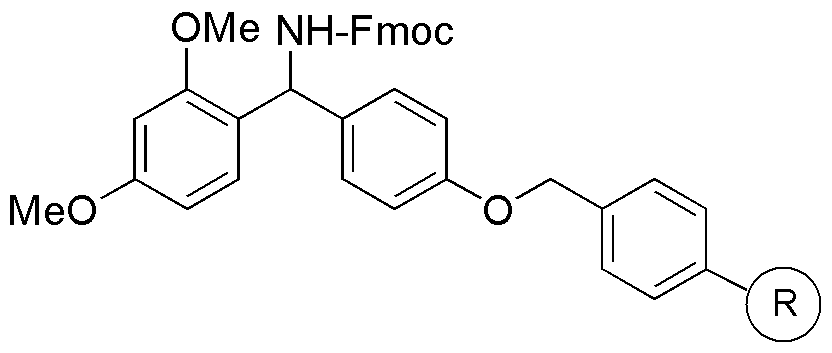Rink amide resin is widely utilized in research focused on:
- Peptide Synthesis: This resin is primarily used in solid-phase peptide synthesis, allowing researchers to efficiently create peptides for various applications, including drug development and biochemical studies.
- Custom Drug Development: Pharmaceutical companies leverage this resin to produce custom peptides that can serve as potential therapeutics, enhancing the specificity and efficacy of drug candidates.
- Bioconjugation: Rink amide resin facilitates the attachment of peptides to other biomolecules, aiding in the development of targeted therapies and diagnostic tools in the biomedical field.
- Research in Immunology: It is used to synthesize peptide antigens for vaccine development, helping researchers create more effective immunotherapies and vaccines.
- Protein Engineering: The resin supports the design of peptide-based probes and tools for studying protein interactions, which is crucial in understanding cellular processes and disease mechanisms.
General Information
Properties
Safety and Regulations
Applications
Rink amide resin is widely utilized in research focused on:
- Peptide Synthesis: This resin is primarily used in solid-phase peptide synthesis, allowing researchers to efficiently create peptides for various applications, including drug development and biochemical studies.
- Custom Drug Development: Pharmaceutical companies leverage this resin to produce custom peptides that can serve as potential therapeutics, enhancing the specificity and efficacy of drug candidates.
- Bioconjugation: Rink amide resin facilitates the attachment of peptides to other biomolecules, aiding in the development of targeted therapies and diagnostic tools in the biomedical field.
- Research in Immunology: It is used to synthesize peptide antigens for vaccine development, helping researchers create more effective immunotherapies and vaccines.
- Protein Engineering: The resin supports the design of peptide-based probes and tools for studying protein interactions, which is crucial in understanding cellular processes and disease mechanisms.
Documents
Safety Data Sheets (SDS)
The SDS provides comprehensive safety information on handling, storage, and disposal of the product.
Product Specification (PS)
The PS provides a comprehensive breakdown of the product’s properties, including chemical composition, physical state, purity, and storage requirements. It also details acceptable quality ranges and the product's intended applications.
Certificates of Analysis (COA)
Search for Certificates of Analysis (COA) by entering the products Lot Number. Lot and Batch Numbers can be found on a product’s label following the words ‘Lot’ or ‘Batch’.
*Catalog Number
*Lot Number
Certificates Of Origin (COO)
This COO confirms the country where the product was manufactured, and also details the materials and components used in it and whether it is derived from natural, synthetic, or other specific sources. This certificate may be required for customs, trade, and regulatory compliance.
*Catalog Number
*Lot Number
Safety Data Sheets (SDS)
The SDS provides comprehensive safety information on handling, storage, and disposal of the product.
DownloadProduct Specification (PS)
The PS provides a comprehensive breakdown of the product’s properties, including chemical composition, physical state, purity, and storage requirements. It also details acceptable quality ranges and the product's intended applications.
DownloadCertificates of Analysis (COA)
Search for Certificates of Analysis (COA) by entering the products Lot Number. Lot and Batch Numbers can be found on a product’s label following the words ‘Lot’ or ‘Batch’.
*Catalog Number
*Lot Number
Certificates Of Origin (COO)
This COO confirms the country where the product was manufactured, and also details the materials and components used in it and whether it is derived from natural, synthetic, or other specific sources. This certificate may be required for customs, trade, and regulatory compliance.

